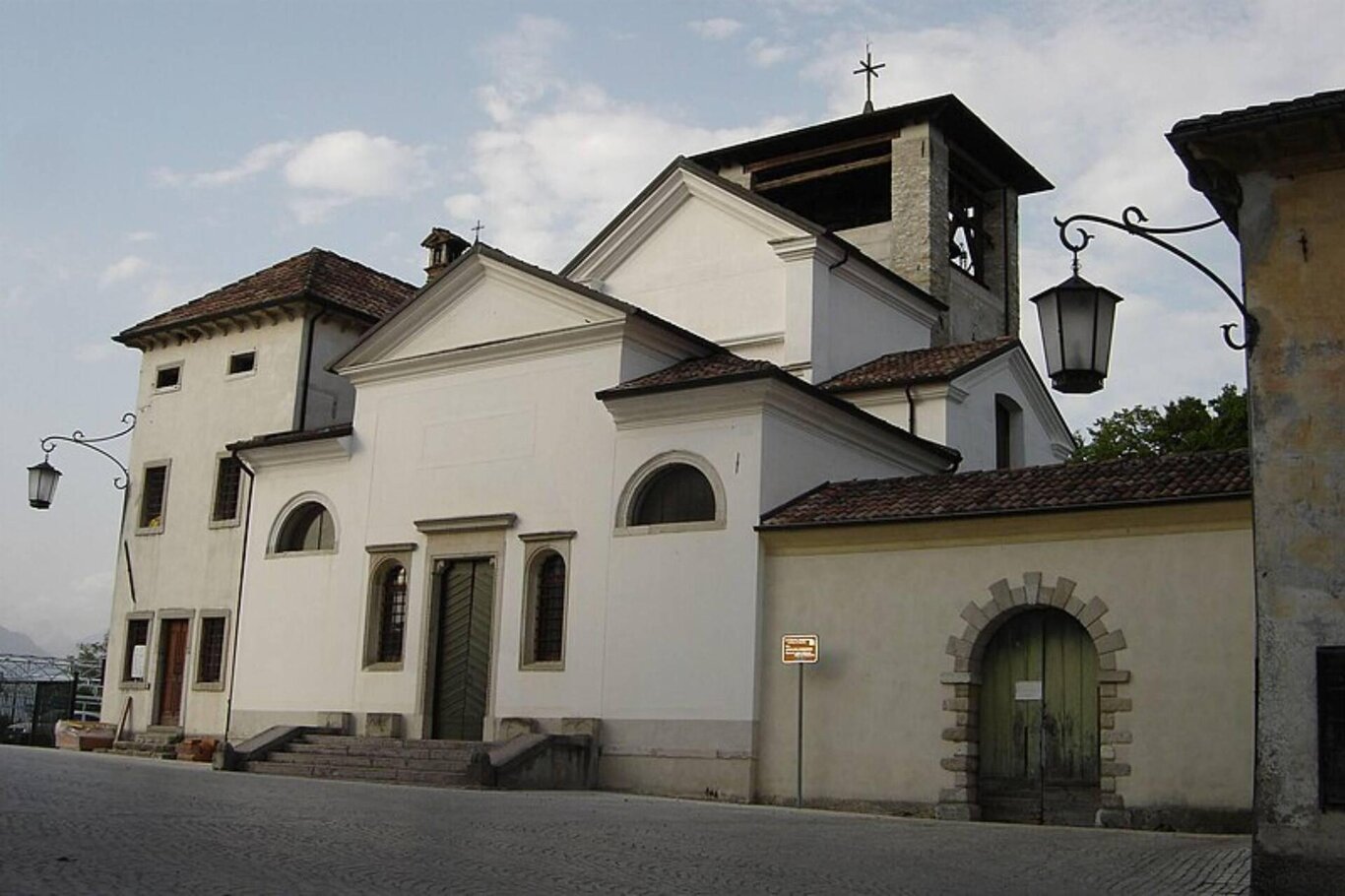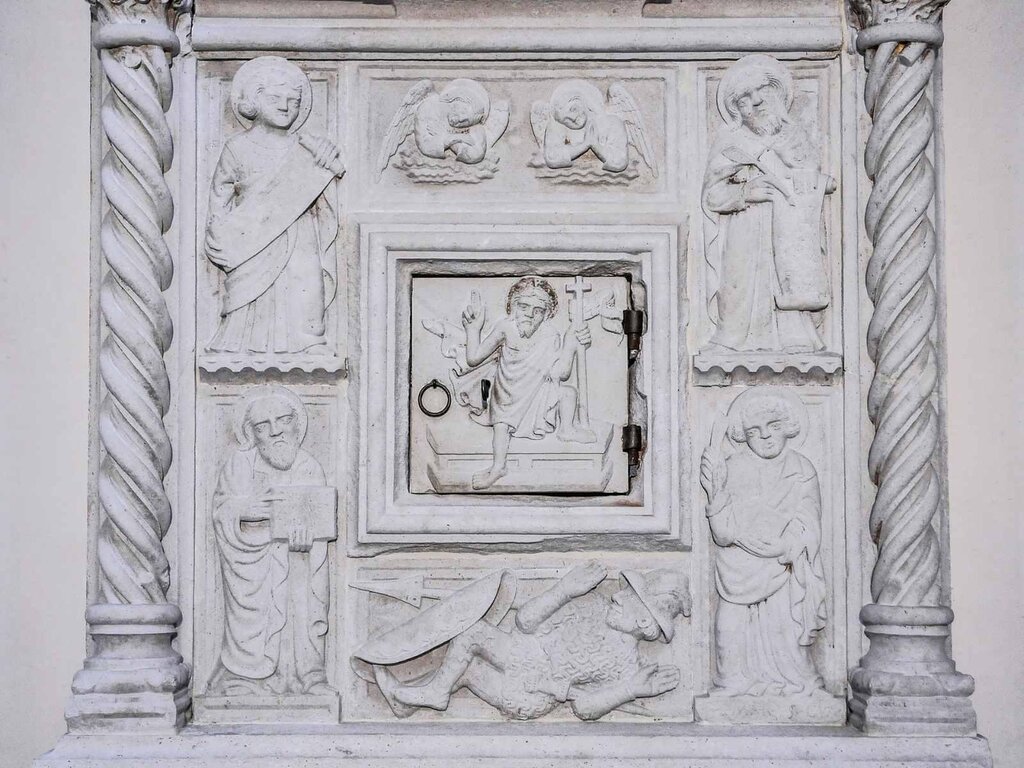The ancient church of Mel, dedicated to the Virgin of Sorrows, was built between 1480 and 1490 with three naves and ten altars. It was an imposing church, but little remains of the original construction and its bell tower.
In 1713, a lightning strike hit the bell tower, causing minimal damage, and it was promptly restored. In 1719, another bolt damaged the church roof and the pipes of the organ, but it was on April 17, 1756, that marked the fate of the original church: a lightning strike hit the bell tower, which caught fire and collapsed, seriously damaging the church.
The bells were promptly recast, and in 1756 were temporarily placed on a masonry tower built near the church of the Virgin of Sorrows. Confiscated by the Germans during World War I, they were melted down to make cannons; only the small bell could be recovered. The current bells were purchased by the Zumelle community and installed on the tower above the church of the Virgin of Sorrows and are named: Maria Annunziata, Fausta, Vittorina, and Corona.
The construction of the new church began the same year, based on the project of the architect from Feltre, Filippo Rossi. As for the church of the Virgin of Sorrows, it was necessary to wait for the archpriest Giovanni Antonio Businello of Serravalle, parish priest of Mel from 1817 to 1832, to give the go-ahead for the project for the reconstruction of the new church, which was arranged by preserving the apse and a small part of the central nave. The altars were reduced to three.
Inside the church of the Virgin of Sorrows, there is a baptismal font, originally placed in the baptistery, dated 1481, which attests to its central role as a "pieve," with a finely carved wooden cover. On the right is the tabernacle by Giovanni Antonio da Marcador, the same artist who sculpted the tabernacle preserved at the Sanctuary of SS Vittore and Corona in Anzù di Feltre in 1480. The imposing piece is very particular because, at its base, it depicts Giorgio Castriota Scanderbeg, or Gjergj Kastrioti Skënderbeu, the national hero of Albania. The font and tabernacle were commissioned by the parish priest Giorgio de Novamonte in 1465.
The church also houses the painting by Giovanni da Mel - Madonna and Child on the throne with Saints Tiziano and Vittore (1535), Madonna and Child on the throne with Saints Peter the Apostle and John the Baptist by the Feltre painter Pietro Marescalchi, sculptures by Andrea Meldolla known as lo Schiavone, and the two altar panels with Saint Agatha and Saint Apollonia from the church of Santa Lucia di Col. The church also preserves the relics of Saint Fausto, which arrived in Mel in 1664 thanks to Brother Egidio de Conti, who requested them from Pope Alexander VII, and on which the Zumelle families swore to cease hostilities and live in peace.
The church is only accessible through guided tours or during special openings.


